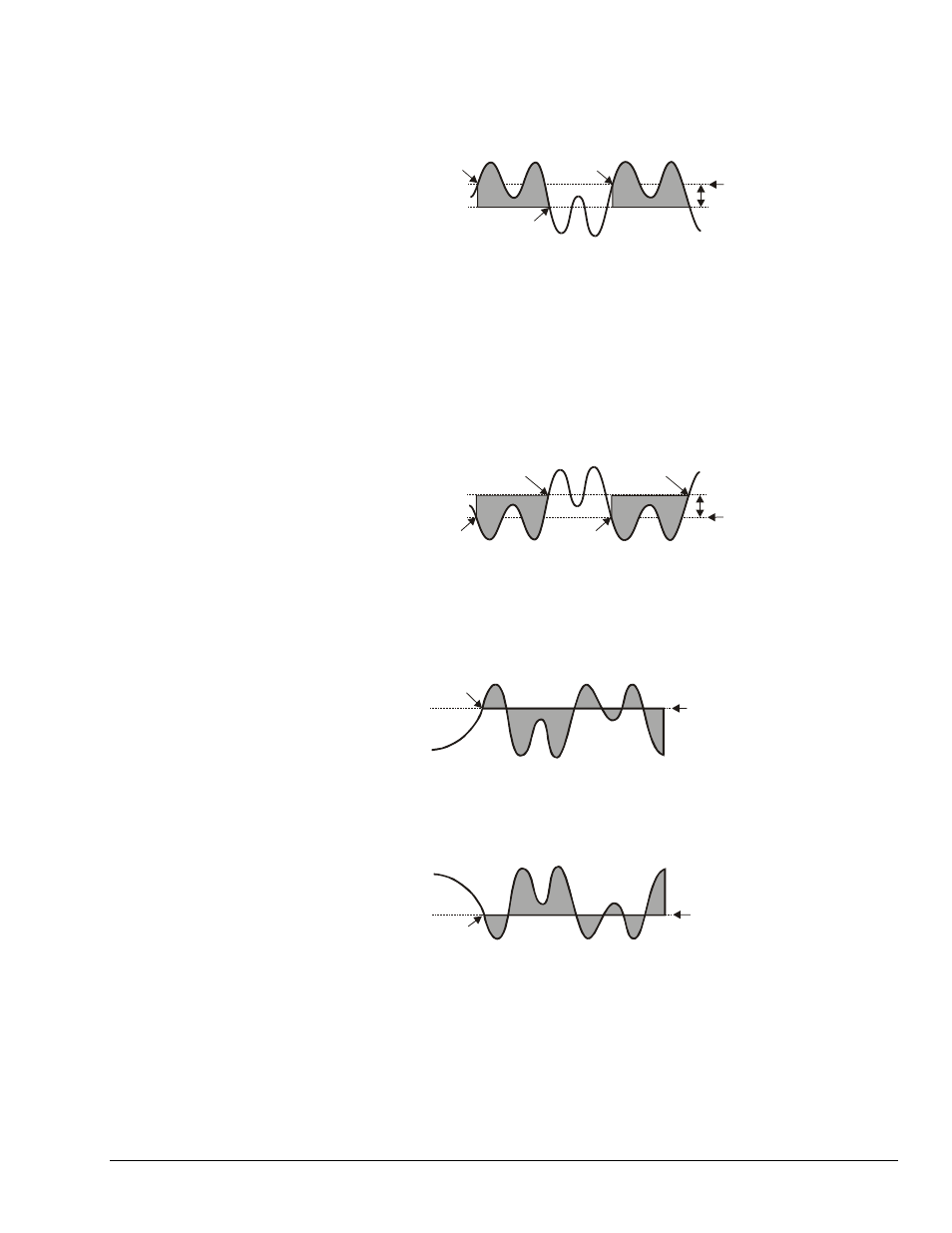Above-level trigger, Below-level trigger, Above-level-with-latch trigger – Measurement Computing StrainBook/616 User Manual
Page 91: Below-level-with-latch trigger

Examination of the input signals compares two specified signal levels: (a) The trigger level determines
when the input channel is a valid trigger, and (b) the hysteresis is the amount by which the channel must
differ from the trigger level for the channel to become invalid.
Above-Level Trigger
Rising slope
Instantaneous duration
Level initialization
Trigger Level
Hysteresis
Trigger
Trigger
No
Trigger
This trigger is valid whenever the signal level is above the trigger level and stays valid until the signal level
goes below the hysteresis range. In the figure, the channel trigger is valid during the 2 shaded intervals.
Whether this condition triggers StrainBook or not, depends on the type of multi-channel triggering ("AND"
or "OR") and on the state of other trigger channels. With "OR" multi-channel triggering, StrainBook will
trigger when the signal first rises above the trigger level—if ready for a new trigger, StrainBook will also
trigger the second time the signal rises above the trigger level. With "AND" multi-level triggering,
StrainBook will not trigger until every specified trigger channel is valid. If all other trigger channels are
valid, StrainBook will trigger when the signal reaches the shaded region; but if some channels are not
valid, this channel will have no effect.
Below-Level Trigger
Falling slope
Instantaneous duration
Level initialization
Trigger Level
Hysteresis
No Trigger
No Trigger
Trigger
Trigger
This trigger is valid whenever the signal level is below the trigger level and stays valid until the signal level
goes above the hysteresis range (the reverse of above-level triggering). As with all multi-channel trigger
types, StrainBook's actual trigger depends on the combination of this trigger with the other channels'
trigger states.
Above-Level-With-Latch Trigger
Rising slope
Latched duration
Level initialization
Trigger
Trigger Level
In this trigger type, the channel becomes valid when the signal level rises above the trigger level and stays
valid until the acquisition is complete and StrainBook is re-armed.
Below-Level-With-Latch Trigger
Falling slope
Latched duration
Level initialization
Trigger
Trigger Level
The channel becomes valid when the signal level rises above the trigger level and stays valid until the
acquisition is complete and StrainBook is re-armed (the reverse of above-level-with-latch triggering).
Latched triggers are often used in multi-channel "AND" triggering, where StrainBook will not trigger until
all trigger channels are valid. After a latched trigger becomes valid, it stays valid (waiting for the other
triggers to become valid) until StrainBook is triggered and the acquisition completes.
If the trigger is non-latched instead of latched, the channel may not stay valid and StrainBook will not
trigger until the channel becomes valid again and all channels simultaneously reach their trigger levels. In
other words, latched triggering is used to trigger after something has occurred, but non-latched triggering
is used only during the simultaneous occurrence of desired signal levels.
StrainBook/616
977694
Triggers 7-3
